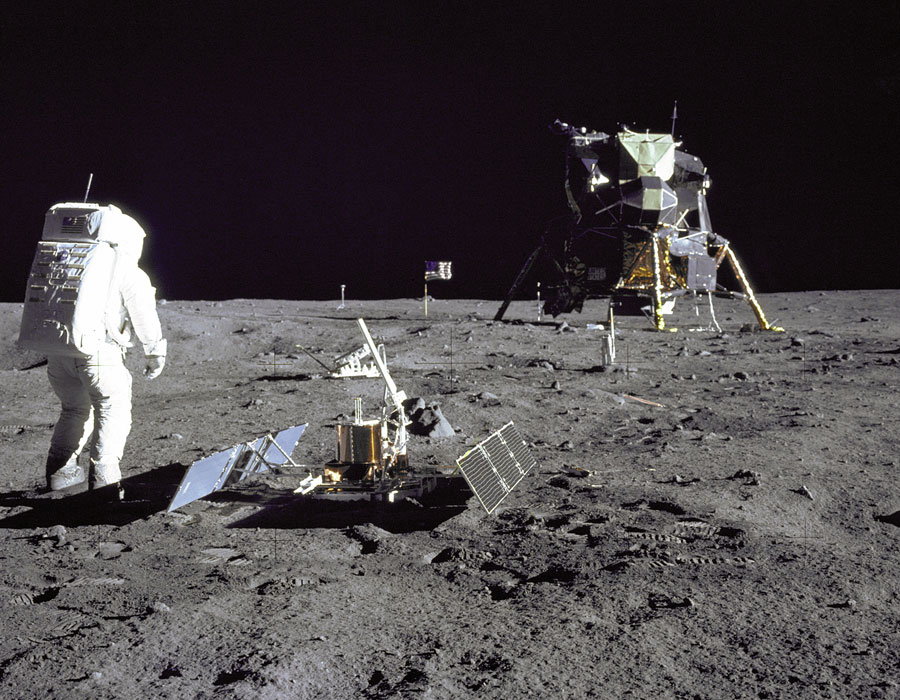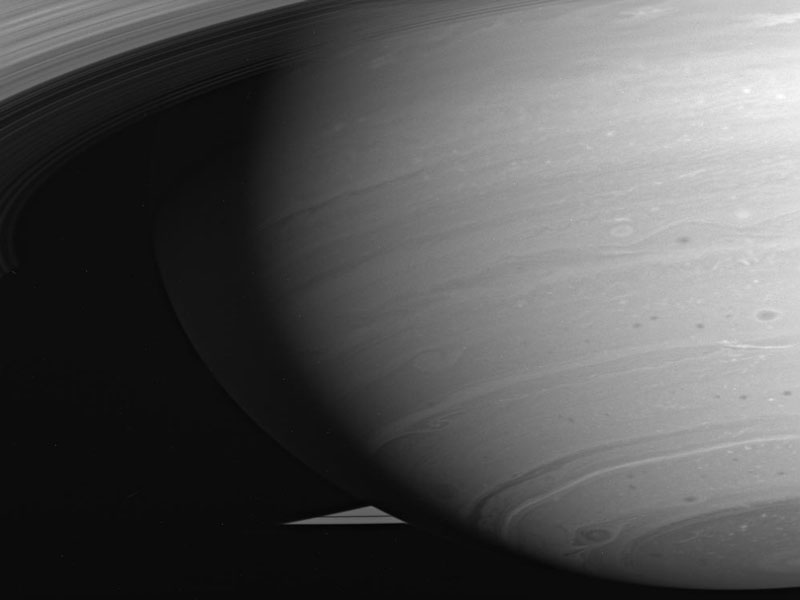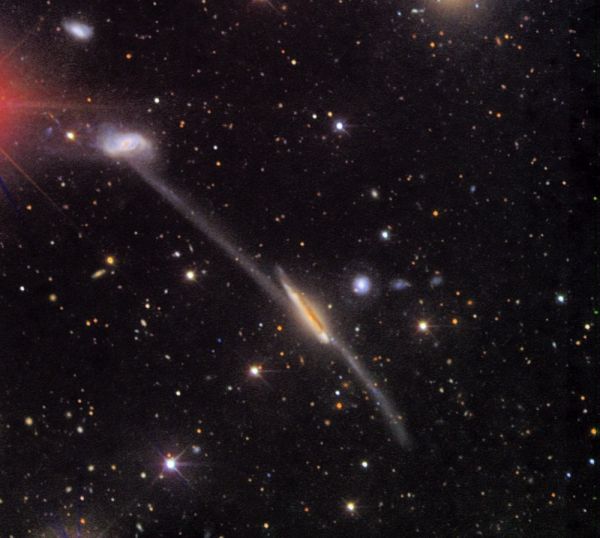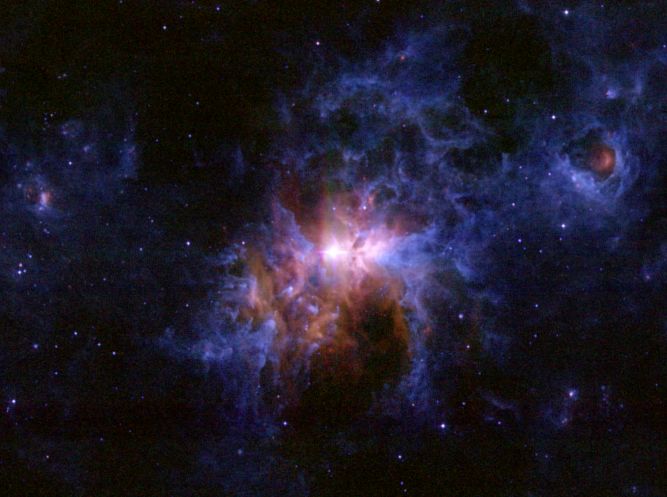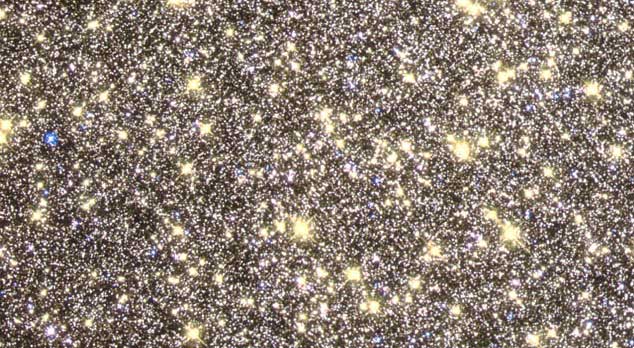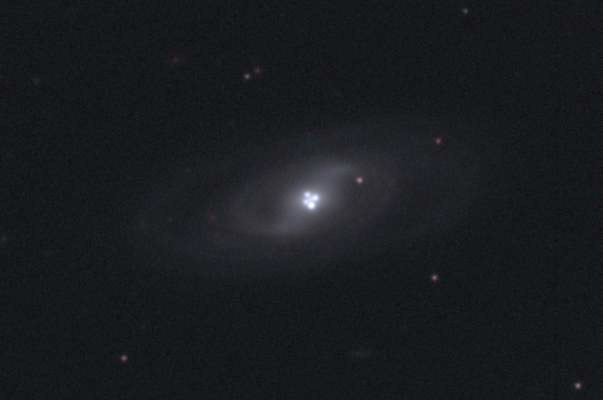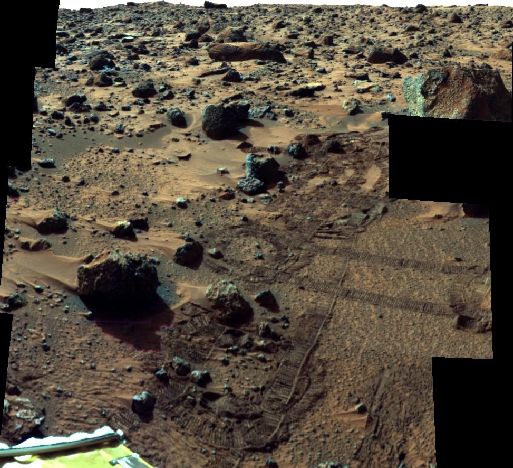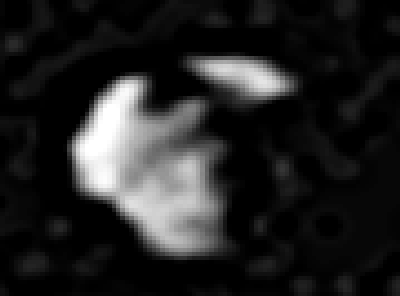| << Previous | Index | Next >> |
2014
[imghover6=http://apod.nasa.gov/apod/image/1410/20 ... 01h990.jpg]http://apod.nasa.gov/apod/image/1410/20 ... 02h990.jpg[/imghover6]Image Credit & Copyright: Rick Baldridge
2013 Interstellar dust clouds and bright nebulae abound in the fertile constellation of Orion. One of the brightest, M78, is just left of center in this colorful telescopic view, covering an area north of Orion's belt. At a distance of about 1,500 light-years, the bluish nebula itself is about 5 light-years across. Its blue tint is due to dust preferentially reflecting the blue light of hot, young stars in the region. Dark dust lanes and other nebulae can easily be traced through this gorgeous skyscape. The scene also includes the remarkable McNeil's Nebula -- a newly recognized nebula associated with the formation of a sun-like star, and the telltale reddish glow of many Herbig- Haro objects, energetic jets from stars in the process of formation.
2012 In myth, Atlas holds up the heavens, but in this scene they seem to pivot around a lighthouse beacon. Photographed with a camera fixed to a tripod, the well-planned 30 minute exposure records star trails in the northern sky, reflecting the daily rotation of planet Earth. Hidden behind the top of the prominent Nauset Lighthouse on Cape Cod, Massachusetts, USA, the North Celestial Pole is at the center of all the star trail arcs. Making a complete circle, 360 degrees, in 24 hours, the star trail arcs cover 15 degrees each hour or 7.5 degrees in thirty minutes. Foreground lighting is courtesy of September 23rd's first quarter moonlight.
2011 Why would a rising Sun look so strange? No one is yet sure. What is clear is that the above unusual sunrise was captured last month from Buenos Aires, Argentina. The body of water in the foreground is Rio de La Plata, considered by many to be the widest river in the world. Although the above image is actually a combination of a normal and a very short exposure needed to avoid oversaturating the bright Sun, the photographer saw this unusual structure with his own eyes, indicating that this effect was caused by neither reflections nor distortions in the camera or lens. What looks like arms on this monster illusion might actually be, for example, low level clouds just thick enough to scatter sunlight without completely blocking the Sun. Additionally, the distortion visible on the lower part of the Sun's image might indicate a Etruscan Vase or Fata Morgana mirage possibly created by a curious refracting layer of air over the water. Unusual atmospheric phenomena are frequently thrilling to see personally, and although most can be traced to well known phenomena, others, for lack of more data, remain mysterious.
2010 Why are there so many moonquakes? A recent reanalysis of seismometers left on the moon by the Apollo moon landings has revealed a surprising number of moonquakes occurring within 30 kilometers of the surface. In fact, 28 moonquakes were detected in data recorded between 1972 and 1977. These moonquakes were not only strong enough to move furniture but the stiff rock of the moon continued vibrating for many minutes, significantly longer than the soft rock earthquakes on Earth. The cause of the moonquakes remains unknown, with one hypothesis holding that landslides in craters cause the vibrations. Regardless of the source, future moon buildings need to be built to withstand the frequent shakings. Pictured above in 1969, Apollo 11 astronaut Buzz Aldrin stands beside a recently deployed lunar seismometer, looking back toward the lunar landing module.
2009 This mid-infrared image was taken in the last minutes of the LCROSS flight mission to the Moon. The small white spot (enlarged in the insets) seen within the dark shadow of lunar crater walls is the initial flash created by the impact of a spent Centaur upper stage rocket. Traveling at 1.5 miles per second, the Centaur rocket hit the lunar surface yesterday at 11:31 UT, followed a few minutes later by the shepherding LCROSS spacecraft. Earthbound observatories have reported capturing both impacts. But before crashing into the lunar surface itself, the LCROSS spacecraft's instrumentation successfully recorded close-up the details of the rocket stage impact, the resulting crater, and debris cloud. In the coming weeks, data from the challenging mission will be used to search for signs of water in the lunar material blasted from the surface.
2008 Irregular galaxy NGC 55 is thought to be similar to the Large Magellanic Cloud (LMC). But while the LMC is about 180,000 light-years away and is a well known satellite of our own Milky Way Galaxy, NGC 55 is more like 6 million light-years distant and is a member of the Sculptor Galaxy Group. Classified as an irregular galaxy, in deep exposures the LMC itself resembles a barred disk galaxy. However, spanning about 50,000 light-years, NGC 55 is seen nearly edge-on, presenting a flattened, narrow profile in contrast with our face-on view of the LMC. Just as large star forming regions create emission nebulae in the LMC, NGC 55 is also seen to be producing new stars. This gorgeous galaxy portrait highlights a bright core, telltale pinkish emission regions, and young blue star clusters in NGC 55.
2007 What has happened to Saturn's moon Iapetus? Vast sections of this strange world are dark as coal, while others are as bright as ice. The composition of the dark material is unknown, but infrared spectra indicate that it possibly contains some dark form of carbon. Iapetus also has an unusual equatorial ridge that makes it appear like a walnut. To help better understand this mysterious moon, NASA directed the robotic Cassini spacecraft orbiting Saturn to swoop within 2,000 kilometers just last month. Pictured above, from about 75,000 kilometers out, Cassini's trajectory allowed unprecedented imaging of the hemisphere of Iapetus that is always trailing. A huge impact crater seen in the south spans a tremendous 450 kilometers and appears superposed on an older crater of similar size. The dark material is seen increasingly coating the easternmost part of Iapetus, darkening craters and highlands alike. Close inspection indicates that the dark coating typically faces the moon's equator. Whether Iapetus' colors are the result of unusual episodes of internal volcanism or external splattering remains unknown. This and other images from Cassini's Iapetus flyby are being studied for even greater clues.
2006 In the vast Orion Molecular Cloud complex, several bright blue nebulas are particularly apparent. Pictured above are two of the most prominent reflection nebulas - dust clouds lit by the reflecting light of bright embedded stars. The more famous nebula is M78, near the image center, cataloged over 200 years ago. On the upper left is the lesser known NGC 2071. The image was taken with the Mayall 4-meter telescope on Kitt Peak, Arizona, USA. Astronomers continue to study these reflection nebulas to better understand how interior stars form. The Orion complex lies about 1500 light-years distant, contains the Orion and Horsehead nebulas, and covers much of the constellation of Orion.
2005 Storms larger than hurricanes continually dot the upper atmosphere of the planet Saturn. A view of many storms occurring simultaneously was captured in July by the robot Cassini spacecraft now orbiting Saturn. An image of unusually high detail was made possible at that time when Cassini isolated a very specific color of polarized infrared light. The numerous white and dark spots visible above are the swirling storm systems. On Saturn, storms like these typically last for months and have even been seen merging. Bands of clouds that circle the entire planet are also clearly visible. Saturn's complex and majestic ring system is seen both in the foreground and the background. The above image has been digitally shortened along the vertical.
2004 It was a quiet day on the Sun. The above image shows, however, that even during off days the Sun's surface is a busy place. Shown in ultraviolet light, the relatively cool dark regions have temperatures of thousands of degrees Celsius. Large sunspot group AR 9169 is visible as the bright area near the horizon. The bright glowing gas flowing around the sunspots has a temperature of over one million degrees Celsius. The reason for the high temperatures is unknown but thought to be related to the rapidly changing magnetic field loops that channel solar plasma. Sunspot group AR 9169 moved across the Sun during 2000 September and decayed in a few weeks.
2003 A spectacular bridge of stars and gas stretches for nearly 250,000 light-years and joins this famous peculiar pair of galaxies cataloged as Arp 295. The cosmic bridge between the galaxies and the long tail extending below and right of picture center are strong evidence that these two immense star systems have passed close to each other in the past, allowing violent tides induced by mutual gravity to create the eye-catching plumes of stellar material. While such interactions are drawn out over billions of years, repeated close passages should ultimately result in the merger of this pair of galaxies into a larger single galaxy of stars. Although this scenario does look peculiar, galactic mergers are thought to be common, with Arp 295 representing an early stage of this inevitable process. The Arp 295 pair are the largest of a loose grouping of galaxies about 270 million light-years distant toward the constellation Aquarius. This deep color image of the region was recorded in September using the USNO 1 meter telescope near Flagstaff, Arizona.
2002 Eta Car is a massive star, but it's not as bright as it used to be. Now only easily visible in binoculars or a small telescope, Eta Carinae has a history of spectacular flaring and fading behavior. In fact, in April of 1843 Eta Car briefly became second only to Sirius as the brightest star in planet Earth's night sky, even though at a distance of about 7,500 light-years, it is about 800 times farther away. Surrounded by a complex and evolving nebula, Eta Carinae is seen near the center of this false-color infrared image, constructed using data from the Midcourse Space Experiment (MSX). The MSX satellite mapped the galactic plane in 1996. In the picture, wispy, convoluted filaments are clouds of dust glowing at infrared wavelengths. Astronomers hypothesize that Eta Car itself will explode as a supernova in the next million years or so. Massive Eta Car has even been considered a candidate for a hypernova explosion and the potential source of a future gamma-ray burst.
2001 What is left over after stars collide? To help answer this question, astronomers have been studying the center of the most massive ball of stars in our Milky Way Galaxy. In the center of globular cluster Omega Centauri, stars are packed in 10,000 times more densely than near our Sun. Pictured above, the Hubble Space Telescope has resolved the very center of Omega Centauri into individual stars. Visible are many faint yellow-white stars that are smaller than our Sun, several yellow-orange stars that are Red Giants, and an occasional blue star. When two stars collide they likely either combine to form one more massive star, or they stick, forming a new binary star system. Close binary stars interact, sometimes emitting ultraviolet or X-ray light when gas falls from one star onto the surface of a compact companion such as a white dwarf or neutron star. Two such binaries have now been located in Omega Centauri's center. The star cluster lies about 15,000 light-years away and is visible toward the constellation of Centaurus.
2000 Most galaxies have a single nucleus -- does this galaxy have four? The strange answer leads astronomers to conclude that the nucleus of the surrounding galaxy is not even visible in this image. The central cloverleaf is rather light emitted from a background quasar. The gravitational field of the visible foreground galaxy breaks light from this distant quasar into four distinct images. The quasar must be properly aligned behind the center of a massive galaxy for a mirage like this to be evident. The general effect is known as gravitational lensing, and this specific case is known as the Einstein Cross. Stranger still, the images of the Einstein Cross vary in relative brightness, enhanced occasionally by the additional gravitational microlensing effect of specific stars in the foreground galaxy.
1999 One hundred and fifty three years ago, on October 10th, 1846, William Lassell was observing the newly discovered planet Neptune. He was attempting to confirm his observation, made just the previous week, that Neptune had a ring. But this time he discovered that Neptune had a satellite as well. Lassell soon proved that the ring was a product of his new telescope's distortion, but the satellite Triton remained. The above picture of Triton was taken in 1989 by the only spacecraft ever to pass Triton: Voyager 2. Voyager 2 found fascinating terrain, a thin atmosphere, and even evidence for ice volcanoes on this world of peculiar orbit and spin. Ironically, Voyager 2 also confirmed the existence of complete thin rings around Neptune - but these would have been quite invisible to Lassell!
1998 "Do not look at stars as bright spots only - try to take in the vastness of the universe." October 1st was the 151st anniversary of the day Maria Mitchell swept the sky with her telescope and discovered the comet of 1847 (comet Mitchell 1847VI). Honored and recognized internationally for her discovery, Mitchell, who lived from 1818 to 1889, became one of the most famous American scientists of her day. Vassar College appointed Mitchell the first woman Professor of Astronomy and she remained the only woman ever elected to the American Academy of Arts and Sciences until 1943. Mitchell mentored a generation of scientists, and is fondly remembered for her ability to motivate. "We especially need imagination in science," Maria Mitchell said, "Question everything."
1997 Spectacular details of rover tracks, wind-driven soil, and textured rocks on the Martian surface fill this color mosaic. The view is north-northeast from the Sagan Memorial Station at the Pathfinder landing site on Mars. These images are just part of the "Super Panorama" - a detailed color and stereo imaging data set being compiled by Pathfinder's IMP camera. The data set will be used to derive detailed topographic maps of the landing site and to further explore the mineralogy of the martian rocks and soil. The forward rover deployment ramp and the rock named Barnacle Bill, appear in the foreground at the left while the larger Yogi rock is partly visible at the upper right. Criss-crossing tracks were made by the cruising Sojourner robot rover's spiked wheels. With three wheels on each side, the two foot long rover makes tracks about 1.5 feet apart.
1996 Today marks the 150th anniversary of the discovery of Triton. On October 10 1846, William Lassell was observing the newly discovered planet Neptune. He was attempting to confirm his observation, made just the previous week, that Neptune had a ring. But this time he discovered that Neptune had a satellite as well. Lassell soon proved the ring was product of his new telescope's distortion, but the satellite Triton remained. The above picture of Triton was taken in 1989 by the only spacecraft ever to pass Triton: Voyager 2. Voyager 2 found fascinating terrain, a thin atmosphere, and even evidence for ice volcanoes on this world of peculiar orbit and spin. Ironically, Voyager 2 also confirmed the existence of complete thin rings around Neptune - but these would have been quite invisible to Lassell!
1995 Saturn's moon Helene is very unusual in that it circles Saturn near the orbit of a bigger moon: Dione. Helene is situated in what is called a "Lagrange point" of Dione - a place of stability created by Dione's gravity. Were Helene to stray slightly from its orbit 1/6 ahead of Dione, the larger moon's gravity would cause Helene to move back toward the Lagrange point. Many massive orbital bodies have stable Lagrange points, including the Earth and Moon. Helene was discovered from the ground by P. Laques & J. Lecacheux in 1980. The photograph above was taken by Voyager 2 as it passed Saturn in 1981. NASA's Cassini mission to Saturn is currently scheduled for launch in October 1997.
| << Previous | Index | Next >> |



